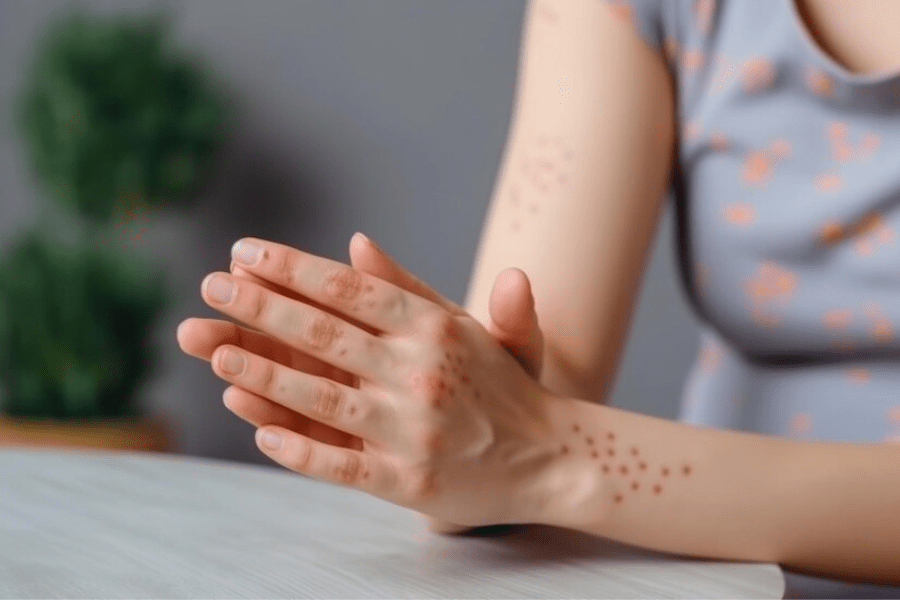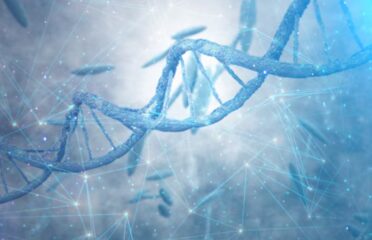Batten Disease
Overview

Batten disease, also known as neuronal ceroid lipofuscinosis (NCL), is a group of inherited nervous system disorders mainly affecting children.
The disease makes it hard for cells to recycle a type of waste called lipofuscin.
People usually call it Batten disease instead of neuronal ceroid lipofuscinosis because there are so many different types of the disease.
They all have other numbers and cause various symptoms. Depending on which type of Batten disease someone has, the symptoms can be mild or severe and progress at different rates.
Symptoms
• Progressive vision loss leading to eventual blindness.
• Seizures are a common symptom.
• Movement disorders, such as impaired coordination or muscle stiffness.
• Onset of dementia-like symptoms.
• Decline in cognitive function and memory.
• Progressive deterioration in neurological function over time.
Causes & Risks
• Batten disease, or neuronal ceroid lipofuscinosis (NCL), inherited in an autosomal recessive pattern, is a rare genetic disorder.
• Mutations in specific genes disrupt the production of essential proteins crucial for cellular function.
• Lipopigments accumulate predominantly in the brain and nervous system cells.
• Various types of Batten disease exist, each resulting from mutations in distinct genes.
• Family history plays a significant role in the risk of developing Batten disease.
• Carriers of a single mutated gene may not exhibit symptoms. Still, they can pass on the mutation, increasing the risk for future generations.
Test & Diagnosis
There are different tests that a neurologist can use to diagnose Batten disease:
• Tissue samples or eye exam: Doctors can examine tissue samples under a microscope to look for the accumulation of specific deposits. Sometimes, they can see these deposits just by looking into a child's eyes. These deposits can cause pink and orange circles to develop, known as a "bull's eye."
• Blood or urine tests: Doctors can look for specific abnormalities in blood and urine samples that may indicate Batten disease.
• Electroencephalogram (EEG): This test involves placing patches on the scalp to record the brain's electrical currents and detect seizures.
• Imaging tests: CT (computed tomography) scans or MRIs (magnetic resonance imaging) can help doctors see if any changes in the brain suggest Batten disease.
• DNA test: If there is a family history of Batten disease, a DNA test can be performed to confirm the diagnosis.
Treatment
• No cure is currently available for any form of Batten disease, but cerliponase alfa (Brineura) received FDA approval in 2017 for CLN2 disease, providing relief for symptoms such as seizures.
• Therapy and medications can address various symptoms and challenges associated with Batten disease.
• Physical and occupational therapy can aid individuals in managing daily functioning despite the disease's progression.
• Ongoing research aims to explore potential treatments and therapies to improve outcomes for individuals with Batten disease.
• While cerliponase alfa targets seizures in CLN2 disease, other symptoms may require different interventions and management strategies.
• Despite the lack of a cure, supportive care and treatment options aim to enhance the quality of life for those affected by Batten disease.
Living With
Living with Batten disease is a profound challenge, as it is a rare and fatal genetic disorder affecting the nervous system.
This progressive condition manifests in childhood, leading to seizures, vision loss, cognitive decline, and motor impairments.
Families face the heart-wrenching reality of watching their loved ones regress physically and mentally.
Daily life involves navigating complex medical care and therapies and adapting to the evolving needs of the affected individual. Emotional and financial strains are inevitable, and the certainty of the disease's outcome adds an immense emotional burden.
Amidst the struggles, families often seek solace in support networks and advocacy to raise awareness about Batten disease and advance research for potential treatments.
Complications
• Progressive vision impairment is a hallmark complication of Batten disease, starting with night blindness and progressing to complete blindness over time.
• Recurrent and severe seizures are common, requiring specialized medical management due to their challenging nature.
• Cognitive decline is prevalent, resulting in learning difficulties, memory loss, intellectual decline, and the eventual loss of acquired skills such as speech and language abilities.
• Motor skills decline progressively, leading to coordination difficulties, impaired movement, and loss of muscle control, potentially resulting in mobility issues and loss of independence.
• Behavioral problems, including irritability, mood swings, anxiety, aggression, or withdrawal, often arise due to neurological damage caused by Batten disease.
• Managing these complications requires a comprehensive approach involving medical intervention, supportive care, and therapies aimed at enhancing quality of life for individuals affected by Batten disease.

The Content is not intended to be a substitute for professional medical advice, diagnosis, or treatment. Always seek the advice of your physician or other qualified health provider with any questions you may have regarding a medical condition.
Know more about
Our Healthcare Planner
Personal Health Planner at BNC is a support staff who listens to your concerns and connects you with a Neuro Care provider. They prioritize your needs and create a trusting relationship between you and the provider.
Three fundamental values we can assure you:
1. Personalized Healthcare.
2. Most advanced robotic therapies
3. Transparent pricing





